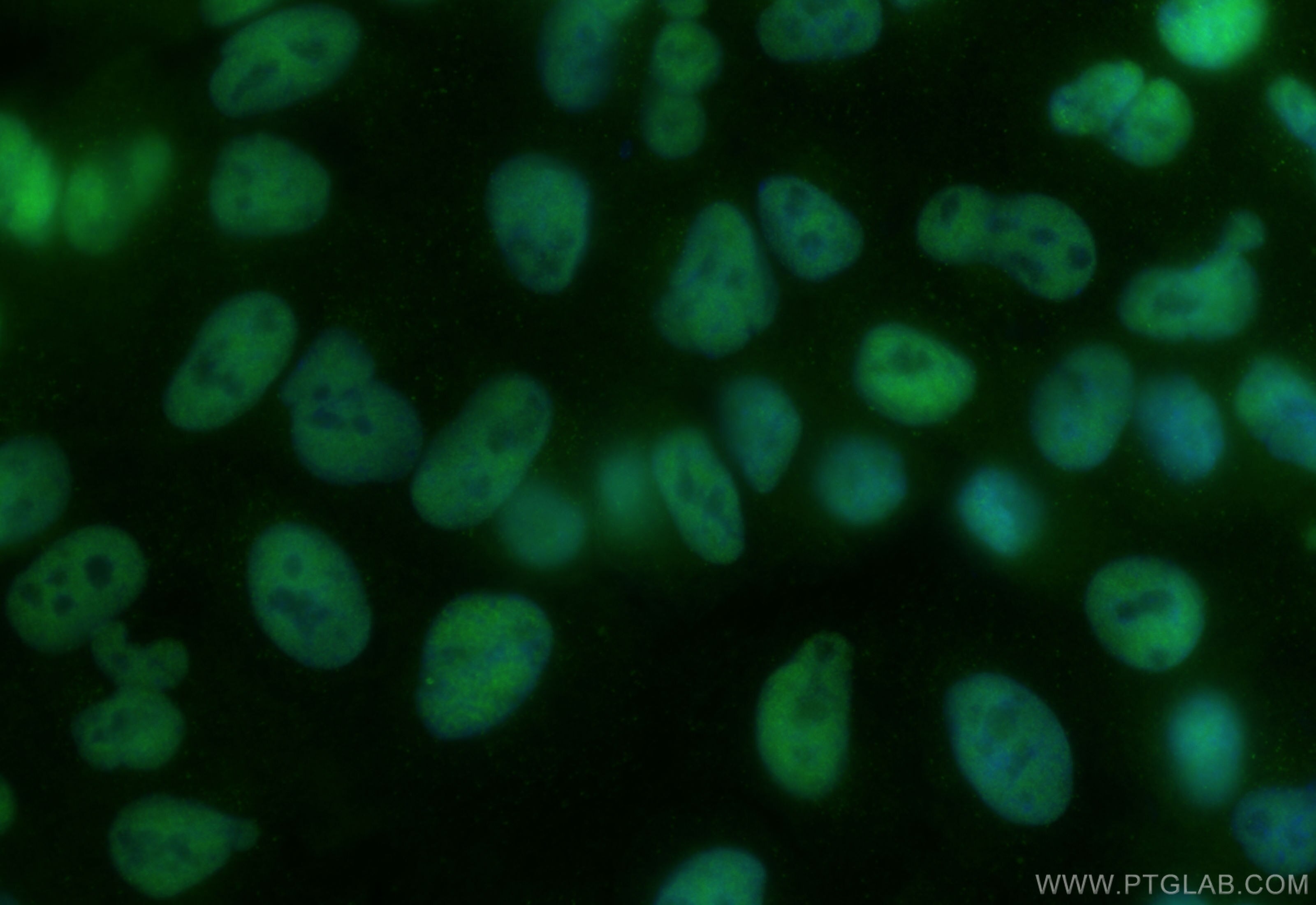Validation Data Gallery
Tested Applications
| Positive IF/ICC detected in | A549 cells |
Recommended dilution
| Application | Dilution |
|---|---|
| Immunofluorescence (IF)/ICC | IF/ICC : 1:50-1:500 |
| It is recommended that this reagent should be titrated in each testing system to obtain optimal results. | |
| Sample-dependent, Check data in validation data gallery. | |
Product Information
CL488-84304-2 targets TOX2 in IF/ICC applications and shows reactivity with human samples.
| Tested Reactivity | human |
| Host / Isotype | Rabbit / IgG |
| Class | Recombinant |
| Type | Antibody |
| Immunogen | TOX2 fusion protein Ag14772 相同性解析による交差性が予測される生物種 |
| Full Name | TOX high mobility group box family member 2 |
| Calculated molecular weight | 488 aa, 52 kDa |
| GenBank accession number | BC007636 |
| Gene Symbol | TOX2 |
| Gene ID (NCBI) | 84969 |
| Conjugate | CoraLite® Plus 488 Fluorescent Dye |
| Excitation/Emission maxima wavelengths | 493 nm / 522 nm |
| Form | Liquid |
| Purification Method | Protein A purification |
| UNIPROT ID | Q96NM4 |
| Storage Buffer | PBS with 50% glycerol, 0.05% Proclin300, 0.5% BSA , pH 7.3 |
| Storage Conditions | Store at -20°C. Avoid exposure to light. Stable for one year after shipment. Aliquoting is unnecessary for -20oC storage. |
Background Information
TOX2 is a transcription factor belonging to the TOX (thymocyte selection-associated HMG box) family that shares a highly conserved high mobility group DNA-binding domain with the other TOX members. A previous study showed that TOX2 is preferentially expressed in human NK cells among various leukocyte populations and is required for in vitro and in vivo human NK cell differentiation from UCB-derived CD341 hematopoietic stem cells (HSCs) (PMID: 25352127).
Protocols
| Product Specific Protocols | |
|---|---|
| IF protocol for CL Plus 488 TOX2 antibody CL488-84304-2 | Download protocol |
| Standard Protocols | |
|---|---|
| Click here to view our Standard Protocols |
